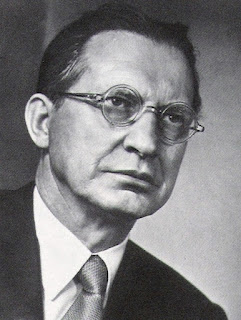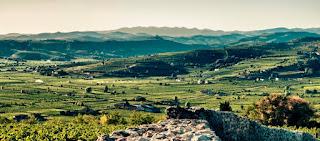Composer's grandfather was President of the Republic
 |
| Luigi Einaudi was President of the Italian Republic from 1948 to 1955 |
Einaudi, who is the grandfather of the musician and composer Ludovico Einaudi and the father of publisher Giulio Einaudi, was elected President of the new Italian Republic between 1948 and 1955, the second person to occupy the post.
He was actively involved with politics from his university days, when he supported socialist movements. For a decade he edited a socialist magazine but later took a more conservative position.
After being appointed to the Senate of the Kingdom of Italy in 1919, in the days when the upper house of the Italian parliament was a non-elected body, he was one of the signatories in forming the Italian Liberal Party (PLI).
The PLI initially joined forces with the Italian Fascists and it was through their support that Mussolini was able to win the 1924 general election with an absolute majority.
Einaudi had been both a journalist and an academic since graduating in law from Turin University in 1895.
 |
| The musician and composer Ludovico Einaudi |
At first broadly supportive of some elements of Fascist policy, he became distrustful of Mussolini's plans for constitutional reform and when the socialist politician Giacomo Matteotti was murdered in 1924, with suspicion falling on gangsters recruited to Mussolini's secret police, he distanced himself from the Fascists.
In 1925, he was among the signatories of the Manifesto of the Anti-Fascist Intellectuals, written by the writer and philosopher Benedetto Croce. In the same year he resigned from Corriere della Sera after the Fascists removed the editor, Luigi Albertini. His positions at the Bocconi University and Turin Polytechnic were taken from him but he retained his professorship at Turin University's law school, signing an oath of allegiance to Fascism rather that let the chair be occupied by a Fascist.
In the Senate, he voted against Mussolini's war in Ethiopia in 1935 and against proposed racial laws in 1938. When Mussolini was deposed and arrested in 1943, he was appointed Rector of Turin University but when the Germans freed the dictator from house arrest and installed him as head of a new Italian Socialist Republic he fled Italy to Switzerland, where he was granted asylum.
 |
| Alcide de Gasperi |
Einaudi entered the winemaking business in 1897 at the age of 23 when he acquired an 18th century farmhouse called San Giacomo outside Dogliani, his mother's home town, about 10km (six miles) from Carrù, which came with a ruined chapel and about 15 hectares of vines.
The farm began bottling Dolcetto di Dogliani under the label Poderi Einaudi (Einaudi Estates), with Luigi attending the harvest every year, despite his numerous commitments.
Although Luigi died in 1961 at the age of 87, the business remained in the family and now extends across 145 hectares, mainly in Dogliani but with some in Barolo. The current owner is Matteo Sardagna, Luigi's great grandson and Ludovico's cousin.
The University of Turin now has an Einaudi Campus named in his honour.
 |
| Dogliani's church of Santi Quirico e Paolo |
Dogliani, where there has been a settlement since pre-Roman times, is a town of some 4,500 inhabitants about 60km (37 miles) southeast of Turin. As well as being the home of the red wine Dolcetto di Dogliani, it is famous for the annual tradition of Presepio Vivente, in which around 350 people take part in a living nativity scene in the medieval streets. The town is also notable for the magnificent parish church of Santi Quirico and Paolo, designed by Giovanni Battista Schellino.
Dogliani hotels by Booking.com
 |
| A typical hamlet in the picturesque Langhe area of Piedmont |
Like Dogliani, the similarly sized Carrù is one of the towns of the Langhe, a picturesque area of hills to the south and east of the Tanaro river famous for wines, cheeses and truffles, in particular the white truffles of Alba. The wines produced in the region include Barbera, Barbaresco, Barolo, Dolcetto and the Langhe Nebbiolo. Carrù hosts the Sagra dell'Uva (fair of the grape) each year. The town's castle, now a bank, is said to be haunted by La dama blu (the blue lady), the wife of one of the counts of Carrù, who was killed by an arrow fired by a murderer who was never caught.
More reading:
Alcide de Gasperi - the prime minister who rebuilt Italy
The distinctive and beautiful music of Ludovico Einaudi
Why Giaocomo Matteotti was called a 'martyr of freedom'
Also on this day:
1926: The birth of actor and writer Dario Fo
(Picture credits: Ludovico Einaudi by Joergens; Church in Dogliani by Luigi.tuby; Langhe hamlet by M^3)
Home



